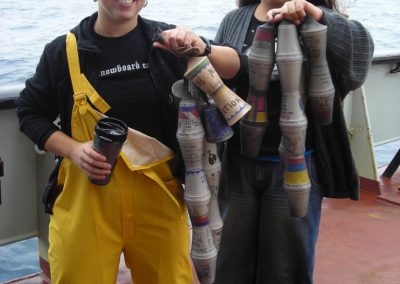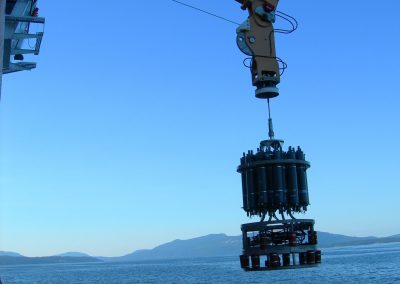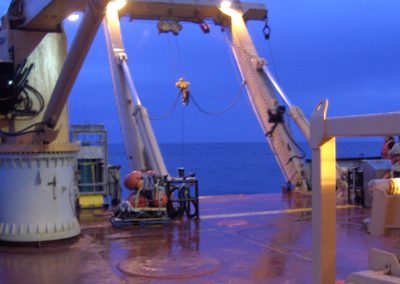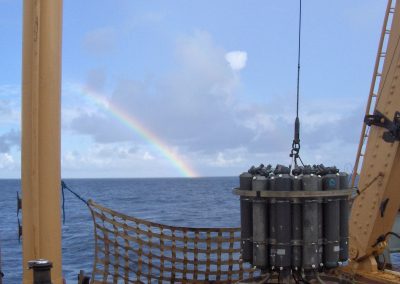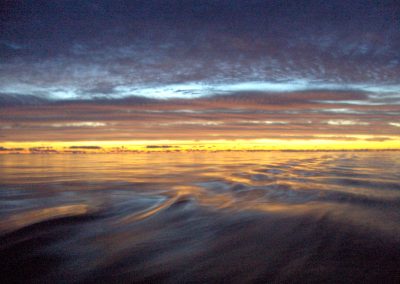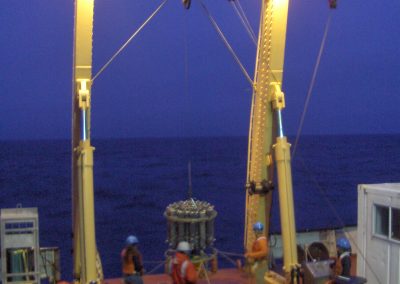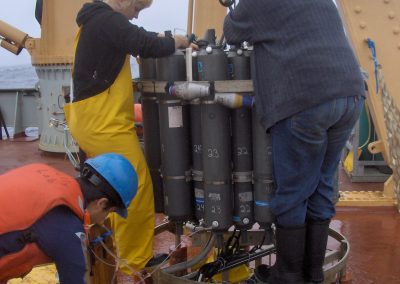LINE P
A Long-Term Oceanographic Time Series
The Line P transect is one of the longest running oceanographic time series in the world, traversing coastal to open ocean water column conditions in the northeastern subarctic Pacific Ocean (NESAP). We participate in Line P cruises to monitor microbial community responses to seasonal dynamics and changing climate patterns. The endurance of this time series is critical to the study of interdecadal processes like ocean acidification, ocean deoxygenation, and Pacific Decadam Oscillation.
Ecosystem Type: Coastal Seas, Open Ocean
Location: Northeastern Subarctic Pacific Ocean, Ocean Station Papa (50°N, 145°W)
More about Line P
The 1,425 km Line P transect traverses British Columbia coastal waters to the oligotrophic open ocean manifesting interesting biological and biochemical gradients along the way. One example is oxygen, Line P spans an expansive oxygen minimum zone (OMZ) situated between 500-1500 m depth intervals. Decreasing oxygen levels within the OMZ direct energy and nutrient flow into microbial metabolic networks and support coupled biogeochemical cycling of Carbon, Nitrogen and Sulfur compounds integral to climate balance and ocean productivity. Recently NESAP waters down to 200 m experienced a massive temperature anomaly called that “blob” giving researchers a unique opportunity to study the effects of marine heat waves on microbial community structure, function and dynamics in relation to energy and nutrient flow patterns.
The terminal station along the Line P transect called Ocean Station Paper (OSP or P26; 50°N, 145°W) was first established as a weather station in 1943 by the US Navy. In December 1949 the first oceanographic measurements were added. Shortly after, in June 1951, the US Navy withdrew and a Canadian vessel took over the mission. In April 1959 seven stations from the coast of British Columbia, Canada to OSP were included giving rise to the Line P transect. Ocean Station Papa has been occupied regularly since 1981 by the Institute of Ocean Sciences from Fisheries and Oceans Canada (DFO). The current Line P program consists of three yearly cruises (generally in February, June, and August) and is mainly operated by the vessel CCGS John P. Tully. We have participated in Line P cruises since 2006, collecting samples for microbial community analysis from major stations including P4, P12, P16, P20, and P26 (OSP) at depth intervals between 10-4000 m. For more information on the time series and access to archival cruise data please visit the Department of Fisheries and Oceans (DFO) Institute for Ocean Sciences (IOS) water properties.
Relevant primary publications related to microbial community structure and function in the NESAP include (PMID: 29142241, PMID: 24200126, PMID: 24030600, PMID: 23801761 and PMID: 23151638).
